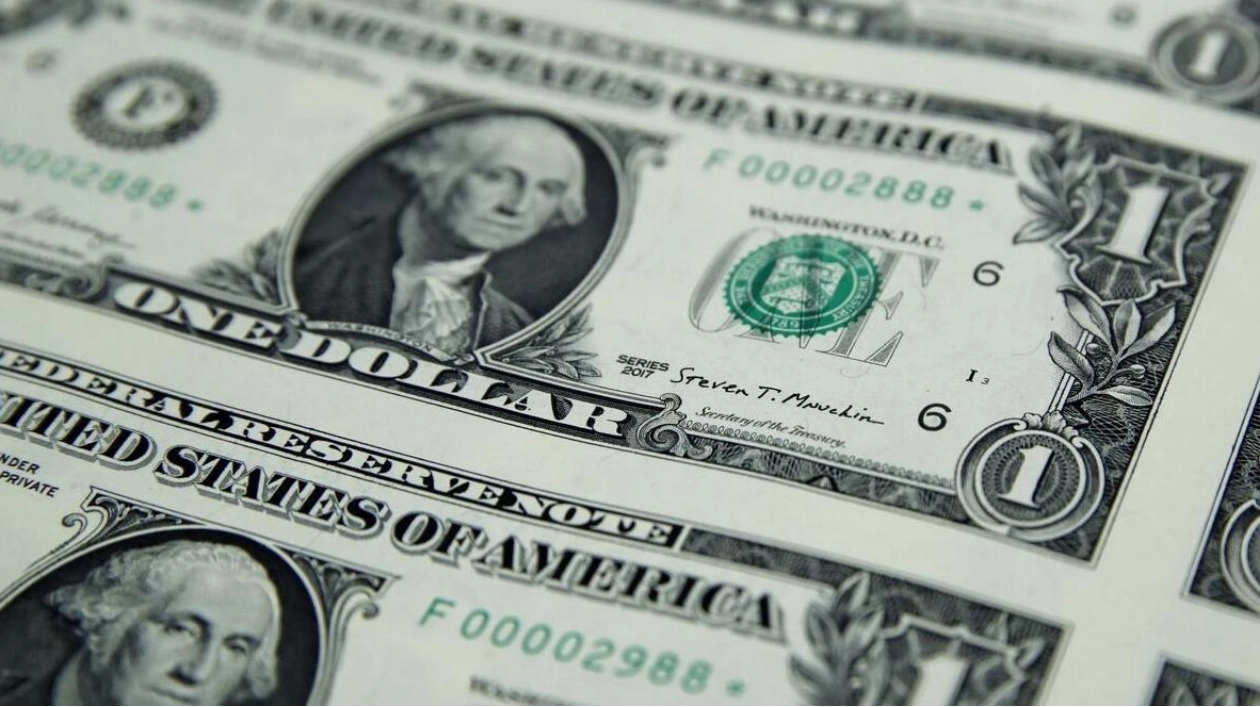The US dollar has long served as the global reserve currency, widely used for trade and transactions across different jurisdictions. Central banks and financial institutions worldwide predominantly hold their reserves in US dollars. Ideally, a reserve currency is meant to be stronger in value than local currencies, providing access to this reserve currency when needed. Despite the US dollar's continued strength compared to many global currencies, its dominance is gradually waning. The greenback's status as the world's reserve currency relies on trust, liquidity, and deep capital markets. Recently, there have been growing concerns about the US dollar's supremacy and the so-called dollar hegemony, notably due to the rising US debt.
Global debt has reached an alarming $315 trillion as of March 31, 2024, with US sovereign debt hitting an unprecedented $35 trillion on July 29, 2024. As a single nation, US debt accounts for nearly 11.11% of the global debt. The US added $16 trillion to its debt in just five years, from $19 trillion in 2019. Despite being the home currency, the sustainability of this debt level is a common question among laymen, business entrepreneurs, and economists. The US government's borrowing pace is astonishing, with another $00 billion drawn down from Monday, July 29, to Thursday, August 1. Annually, the US government pays over $1 trillion in interest on this debt. Former Treasury Secretaries Hank Paulson and Timothy Geithner have warned that the US debt growth could ultimately undermine our prosperity unless addressed immediately.
This growing debt is a concern for countries relying on their US dollar reserves as a safe haven. Global countries are increasingly aware that changes in US policies could impact them and destabilize their economies. China, for instance, has been reducing its US Treasury holdings from $1.3 trillion in 2014 to below $775 billion in May this year, using the proceeds to finance commodity purchases and boost gold reserves. Many other countries are considering increasing their gold reserves instead of adding US Treasuries. In contrast, Japan remains the largest foreign holder of US Treasury securities, with holdings totaling $1.138 trillion at the end of 2023.
With higher debt and interest rates, the narrative around rate cuts is becoming increasingly complex. The US Federal Reserve has stated it will make rate cut decisions based on received statistics and data. The Fed paused interest rate changes after the last hike in May 2023, maintaining the Fed Funds target rate at 5.25% to 5.5%. Despite the world being aware that the Federal Reserve's two percent inflation target seems unrealistic compared to the actual higher inflation rate, the US central bank has maintained a pause without any rate cuts in recent meetings. Global central banks are cutting rates at the fastest pace since Covid, with 35 rate cuts by July 31, compared to 92 in May 2020 and 76 in April 2009. The Federal Reserve seems to be lagging in initiating rate cuts compared to other central banks globally.
Financial markets are now anticipating the first rate cut of 25 to 50 basis points in the Fed's statement scheduled for September 18. Markets project three cuts (75 basis points) in 2024, bringing the Federal Funds rate down to 4.50% to 4.75% by the end of the year. Further, four cuts are expected in 2025, taking the rate down to 3.50% to 3.75% by the end of the next year. Whether the Federal Reserve will cut rates as anticipated remains uncertain given the current staggering debt level. To continue raising debt, the US may need to maintain attractive interest rates for investors. The US government is running substantial budget deficits, with the US Treasury borrowing heavily at regular auctions to finance this deficit. Nearly $1 trillion of additional net issuance in US Treasury bonds occurred in the first six months of 2024 alone.
The US economy is showing signs of contraction, with the recent ISM manufacturing index reading of 46.8, well below the Dow Jones estimate of 48.9. Analysts are signaling a recession, ahead of any official acknowledgment by the Federal Reserve and the federal government. Despite these challenges, the prominence of dollarisation through US Treasuries or debt in financial markets remains evident. The current US stock market cap stands at approximately $58 to $59 trillion, while GDP for 2023 was $28.78 trillion, and current US government debt stands at $35.1 trillion. These figures create an increasingly imbalanced economic situation for the world. The debt-to-GDP ratio currently stands at 122%, continuously rising. World central banks and leaders are increasingly recognizing the massive quantitative easing (QE) followed by slight quantitative tightening (QT) as insufficient, given the daily increasing US government debt.
The recent swings in US financial markets, involving adding and reducing billions and trillions on a daily basis, are concerning and unprecedented. The turmoil in financial markets should not be taken lightly. As central banks and policymakers globally prioritize their homeland, the outside world faces isolation. Japan's recent move to end 30 years of negative rate regime and raise interest rates to 0.25% in the last three months has shaken hedge funds, triggering widespread asset liquidation of trillions of dollars' worth of trades and contributing to the current downturn. Hedge funds have been borrowing Japanese yen at zero interest and investing in overseas markets. The recent shift to a positive interest rate has significantly impacted this strategy, with hedge funds unwinding positions. The Japanese yen's rise from 127.21 yen to the dollar on January 16, 2023, to a high of 161.80 yen on July 11, 2024, a devaluation of 27% in 18 months, and retracing to a low of 141.684 to the US dollar on August 5, is unprecedented. The rising yen has jolted the US dollar index, which dropped from a high of 106.13 on June 26 to a low of 102.47 on August 5, with expectations of further downside. The consequences of such moves are not going to disappear easily as commercial traders struggle to balance their strategies, reconfigure their algorithms, and face capitulation in financial markets.
The world is beginning to embrace reality by trading in currencies other than the US dollar, with countries like China initiating international trade transactions in their own currency. BRICS nations (Brazil, Russia, India, China, and South Africa) are actively considering setting up a transaction network similar to SWIFT, potentially creating a new economic reality for their countries. The combined GDP of BRICS nations exceeds that of the G7 nations, making their voice significant and cannot be ignored. Is the US dollar hegemony showing signs of cracking? It's clear that the world is considering alternatives as no number one remains on top forever. The concept of digital currency is gaining traction, outside the Federal Reserve's interest. Can we envision a digital reserve currency common for the world and backed by gold or some form of tangible security, unlike the US Dollar, which is merely a trust statement on paper? World leaders seem to ponder this thought, but consensus may not come quickly. Until global consensus prevails, we will continue to witness a multi-polar world where self-interest or vested interest dominates unbiased global interest. The US Dollar Hegemony is at risk as countries explore every feasible and practicable alternative.
At this juncture, the interplay between geopolitics and economics is evident. Political decisions have far-reaching consequences on economies, sometimes unpredictable. These global developments add uncertainty to the world economy, and the potential damages could be severe if the situation worsens. It's time for sanity to prevail, and world leaders should strive for balance instead of rocking the boat or pulling in opposite directions. As always, brace for impact ahead...






